For many years Western Grebes and Clark’s Grebes were considered to be color phases of the same species. But when it was discovered that they practice preferential mating (a strong tendency to only mate with their “own kind” – Western x Western and Clark’s x Clark’s) they were classified as two distinct species. DNA studies reinforce this decision.
The two species are similar but easily distinguished from each other by several field marks.
Western Grebe
The eyes of Western Grebes are surrounded by black and their bill is dusky or yellow-green and less brightly colored than that of the Clark’s Grebe.
Clark’s Grebe
The eyes of Clark’s Grebes are surrounded by white and their bill is bright yellow to orange-yellow.
Both species are common in my area and I’ve spent years photographing them and observing their behaviors. During the breeding season it’s relatively easy to single out mated pairs based on a variety of well-known behaviors that occur between paired birds.
One of the behaviors that occurs between mates is called “mate feeding”. This is where the female repeatedly begs for food from the male while he is on the water’s surface. When the male catches a fish he gives it to her and then almost immediately dives for another. The begging of the female stops while he is under water.
I observed and photographed the following behavior a few days ago at Bear River Migratory Bird Refuge.
This mated pair consists of a male Clark’s Grebe on the right and a female Western Grebe. Here the male is delivering a fish to the female…
which she immediately takes…
and gobbles down.
A few minutes later he delivered another fish.
And another. I watched this happen 5-6 times over the course of about 20 minutes.
In the years I’ve watched and photographed the behaviors of both species I’ve never before seen a Western Grebe mated to a Clark’s Grebe. Mixed species pairs are uncommon to rare so to have seen this natural but unusual behavior was pretty special for me.
You just never know what you’re going to see “out there” if you pay attention…
Ron


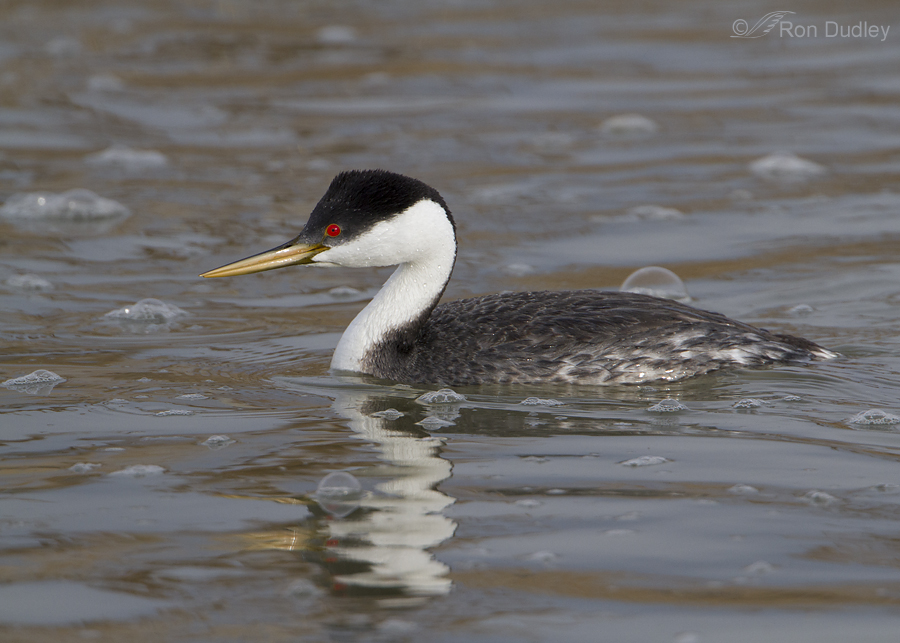

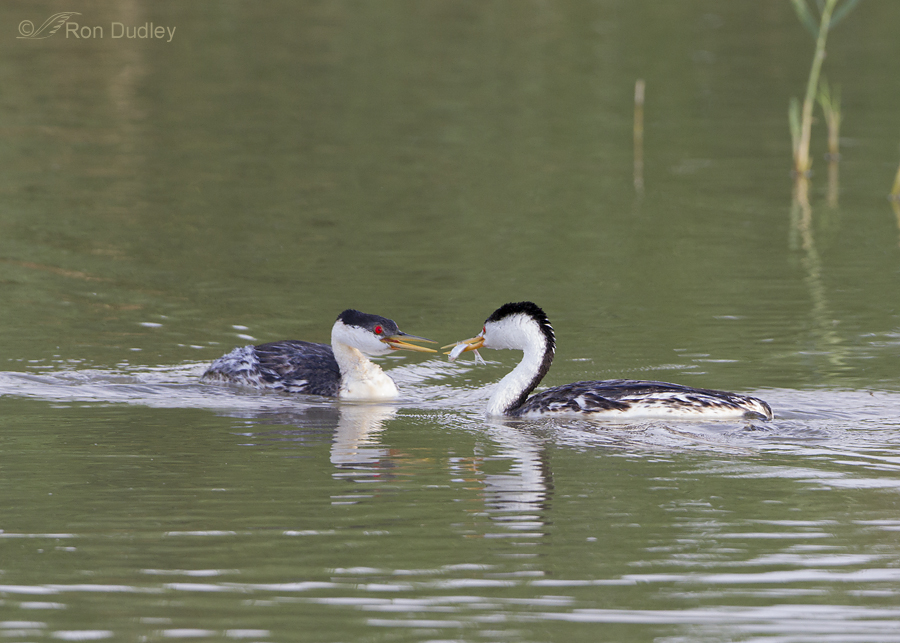
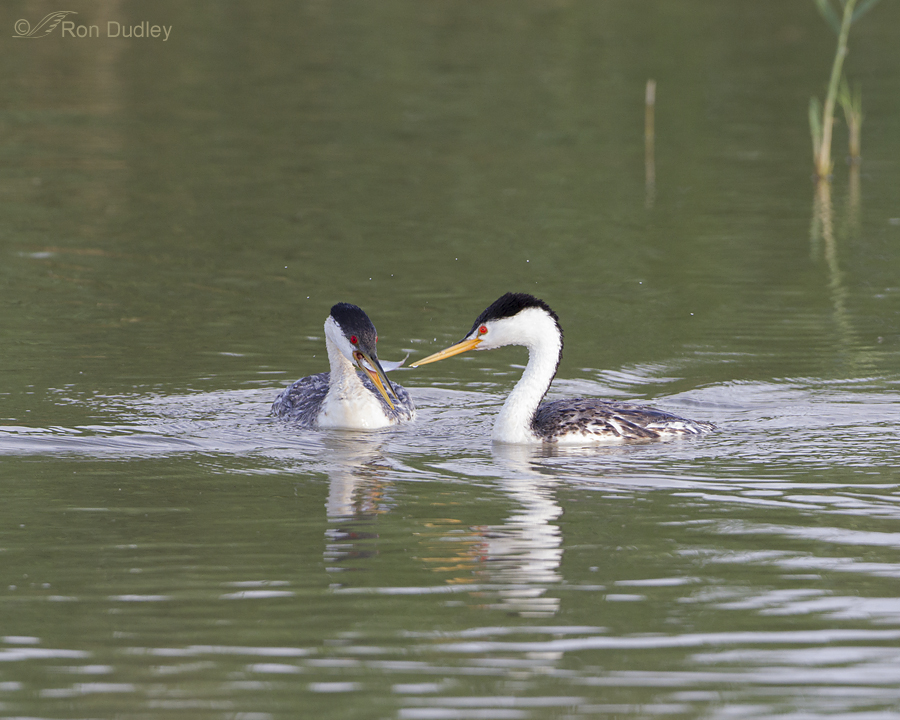
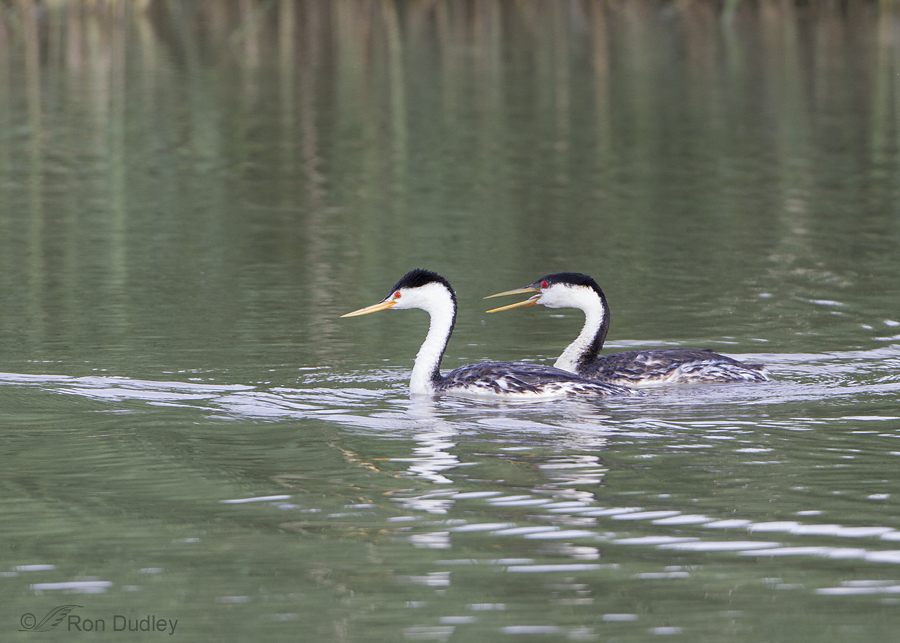
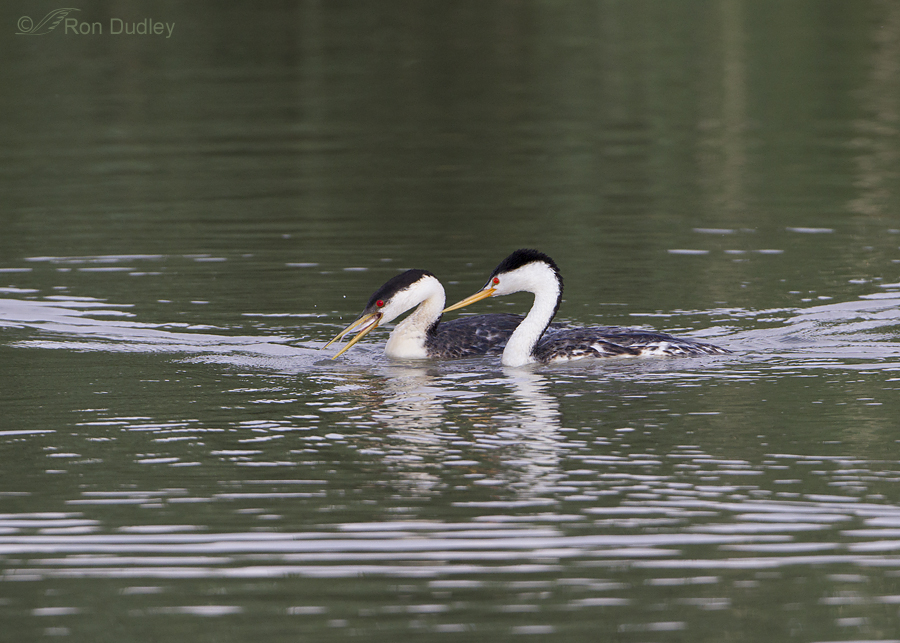
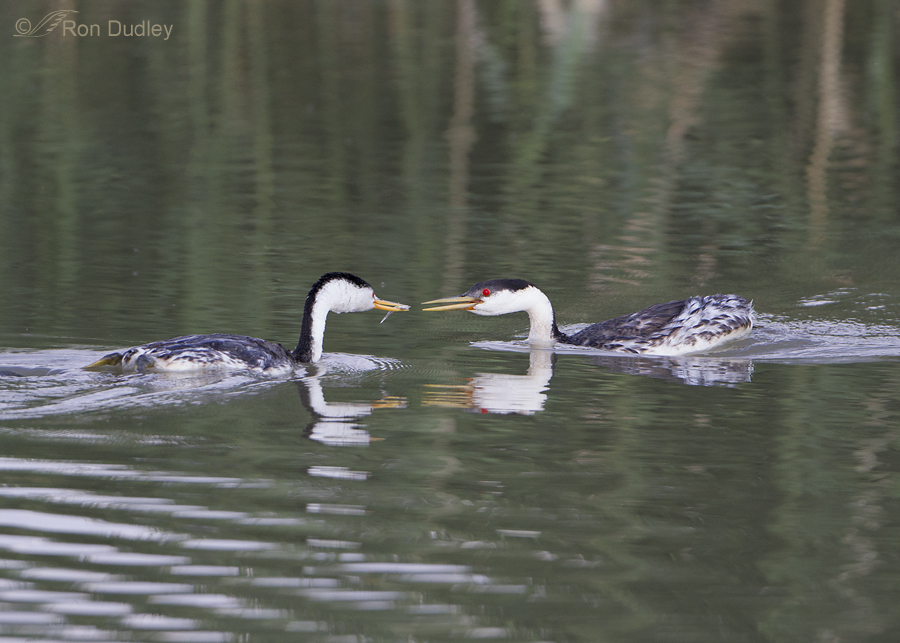
Just came across this post and photos and it helps confirm an observation my wife and I made at Bear River in May. Spent some time watching a “mixed” pair Grebes interacting apart from other pairs, sadly no “mate feeding”. Maybe the same pair? http://www.flickr.com/photos/dkol/8885277425 We were both wondering if they interbred and kind of came to the conclusion of “why not”. I really enjoy your wonderful behavioral shots and explanations.
Just wondering, did the courting go any further than the ritual feeding? Maybe the female was just taking advantage of the poor guy for an easy meal.
Hi Ron,
I have been following your photos for several years – as a photographer and biology lover – its great
I photographed dancing grebes last year at Klamath falls for 2 months – and yes, lots of rushing between the 2 species –
I never photographed a “mated” pair – I will relook at all my photos as a reminder.
but yes they interbreed.
barb
That’s a first for me. Great captures, Ron.
Thank you, Jane.
Just awesome, Ron! Only a true observer would notice this, and an excellent photographer capture it. Fortunately, you are both!! Thanks for sharing.
Thanks very much, Melissa. I’ll have to admit that Mia (with her better eyes) noticed it before I did but looking through the lens I wouldn’t have been much behind her…
Wow, Ron! Great story and pics! So, do they have viable eggs?
Tana, yes – they’re close enough to each other genetically that they do produce offspring. What I don’t know is whether or not those offspring are sterile.
Wow, great captures!
Thanks, Cindy.
I am so glad you visit often, nice pics. We are visiting there today. Can’t wait to see what we encounter.
Hope you have a great time at Bear River, Tanja. There’s lots of dead carp out there right now so the aroma is a little ripe at times, especially on the north side of the loop but there’s quite a bit of activity on the south.
How I wish I was “out there”again! Nothing ever made me feel more alive or gave me more joy. You and Mia obviously savor every minute of it. I’m happy for you and grateful for all that you share with us. These are such beautiful, colorful birds… showing very touching, fascinating behavior. How exiting to see and capture this wonderful “mixed marriage”! I love the colors, context, ripples and reflections in the water, especially the bubbles in the first shot. Thank you for starting my day with such beauty.
I’m glad you enjoyed the images and the behavior, Patty. I do wish you could bet “out there” again.
Absolutely captivating comments and shots Ron!
Charlotte Norton
Thank you, Charlotte.
How amazing, Ron! Not just the Clarks-Western union, but also the great documentation of the feeding behavior. Thanks for showing more clearly, too, the differences in species. Are they always this distinguishable in your experience? That is, are the Clark’s markings always as distinct from the Western’s as what’s depicted here? If so, I should never have trouble with my IDs again.
The color around the eye is a very reliable field mark, Ingrid. At times it doesn’t look deep black around the eye of the Western but it’s still easily seen.
The only situation I know of where there might be some confusion would be with the relatively rare hybrids produced by these Western/Clark’s unions. In them the colors are intermediate.